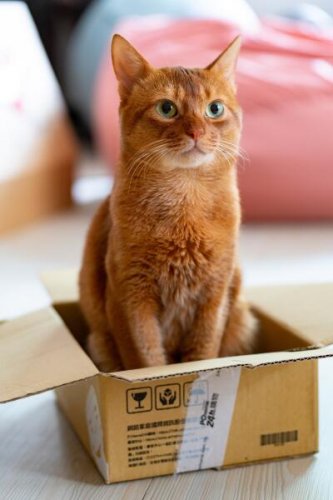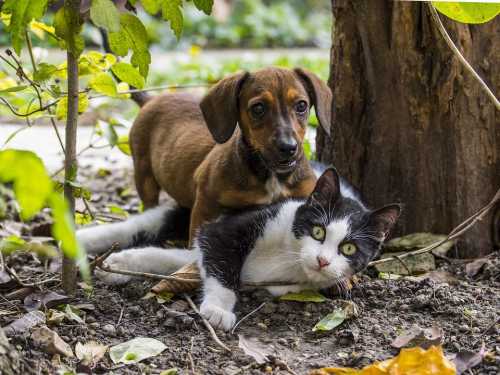
There are several ways to train cats to use the toilet. Some of them are so complicated that many lovers of these cute animals give up on their idea without even trying to implement it. The method I will tell you about is very simple and accessible even to a novice cat owner.
I didn't come up with it, it was in a book that I haven't had for several years, and I don't even remember its name. It's as follows.
1. To begin with, your pet should already know how to use the litter box. And it doesn’t matter where this litter box is. Your task is to move this litter box closer to the toilet. My cat, for example, chose a place for herself in the kitchen under the sink, and we moved from there, after each use of the litter box, moving it 3€'5 centimeters on the way to the toilet. My cat specimen had a character, and we repeated the path of the litter box from the kitchen to the toilet three times. Perhaps you were lucky, and your pet’s litter box immediately ended up in the right place.
2. When the tray is finally where it should be, at the foot of the toilet, the most important and interesting part begins. At this stage, you will need unnecessary newspapers and magazines. A whole stack.
After each use of the tray, put newspapers or magazines under it. Just don't rush, don't lift the tray higher than 1-2 cm at a time! Otherwise, your cat may suspect something is wrong and start dictating its terms. Be patient. If your animal shows any signs of persistence, stop. Let it get used to what it has achieved. And make sure that the construction of the newspaper stand and tray is stable and does not fall apart at the most inopportune moment.
As you raise the tray to a higher and higher level, reduce the amount of litter in the tray. Ideally, use no litter at all to begin with.
3. When the pile of magazines and newspapers is high enough that the litter box is level with the toilet, make sure your pet can safely jump into the litter box and use it as intended. Now comes the big historical moment.
The pile of newspapers is removed without a trace (where the cat cannot get to it), and the tray is placed directly on the toilet.
Some people recommend using an additional seat. I prefer to simply lift the existing one. When there are no plastic structures on the toilet, it is stable and solid. The feeling of security is exactly what your pet needs during the toilet training process.
Make sure the litter box is secure and doesn't wobble, and let your pet use it a couple of times.
4. And the very last thing you have to do is hide the litter box. It’s better to take it out of the apartment. We hid ours on a very high mezzanine, far behind the paint cans, behind tightly closed doors. The main thing is that your pet, with all his searching talent, would not be able to find it by smell. He simply won’t have a choice: he will be forced to do what we have been trying to get from him for so long.
Having jumped onto the toilet (there is nowhere else, but the cat has already gotten used to having to jump to go to the toilet) and not finding the usual litter box, the cat will remain on top. Maybe he will put his paws inside, if the toilet design allows it. And do his business!
My white fluffy lady would sit inside for small tasks, lowering all her paws onto the “step” of the toilet, then rubbing the water from above, as if burying it. For big tasks, she would settle down with all her paws on the edge of the toilet and make a smart face in the process.
Attention! If the method did not work on your animal, and there was a failure at the stage of destroying the tray, return the tray to its place (in the toilet) and try again.
If that doesn't work, start cutting a hole in the center. First a small one, then a little wider, then even wider. Until only the sides are left. Throw away the sides, and voila: you get a cat with all the amenities! It takes longer, but it's safer. Remember, our animals still think differently than we do. If you act gradually enough, they may not even notice the difference.
The toilet training process can take from 1 week to 2 months, depending on the animal's compliance and intelligence. You can go back at any stage if something doesn't work out.
I don't know of any cases of complete failures with training using this method. Everything will work out if you want it to!
Good luck to you!
Main postulates:
1. The toilet door should never be closed tightly.
2. The toilet lid should always be up.





